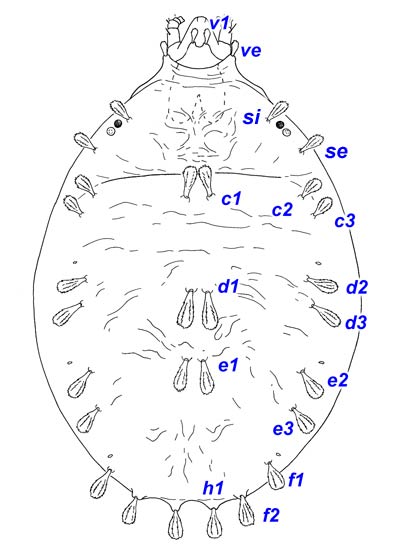

Home | Bryobiinae Home | Glossary
Bryobiinae - Introduction
This subfamily of spider mites (within the family Tetranychidae, superfamily Tetranychoidea) contains numerous pest species, especially in the genera Bryobia and Petrobia. Many of these pests are already in the United States (e.g. Tetranychopsis horridus) or are considered of only minor importance (e.g. Aplonobia histricina), but some important pests, especially in the genus Bryobia, have not yet been found to be established in the US. Most bryobiines are pests of low growing plants, especially grains and legumes, but some are pests of fruit trees and vines and highly polyphagous pests feed on many plant forms.
Bryobiine mites tend to be relatively large, at least as adults, typically with a reddish, brownish or greenish cuticle and long legs I that are used like antennae. They are most likely to be confused with earth mites (Penthaleidae) or with some of the long-legged spider mites in the Tetranychinae, such as species of Eutetranychus. However, bryobiines have the typical spider mite stylophore and so are easily distinguished from earth mites. Tetranychine spider mites have only 2 pairs of ps-setae on the anal valves, instead of 3 pairs in the Bryobiinae, and lack tenent hairs on the empodium (although they often have proximo-ventral hairs that lack the flattened tips of tenent hairs). Bryobiinae do not produce silken webs.

